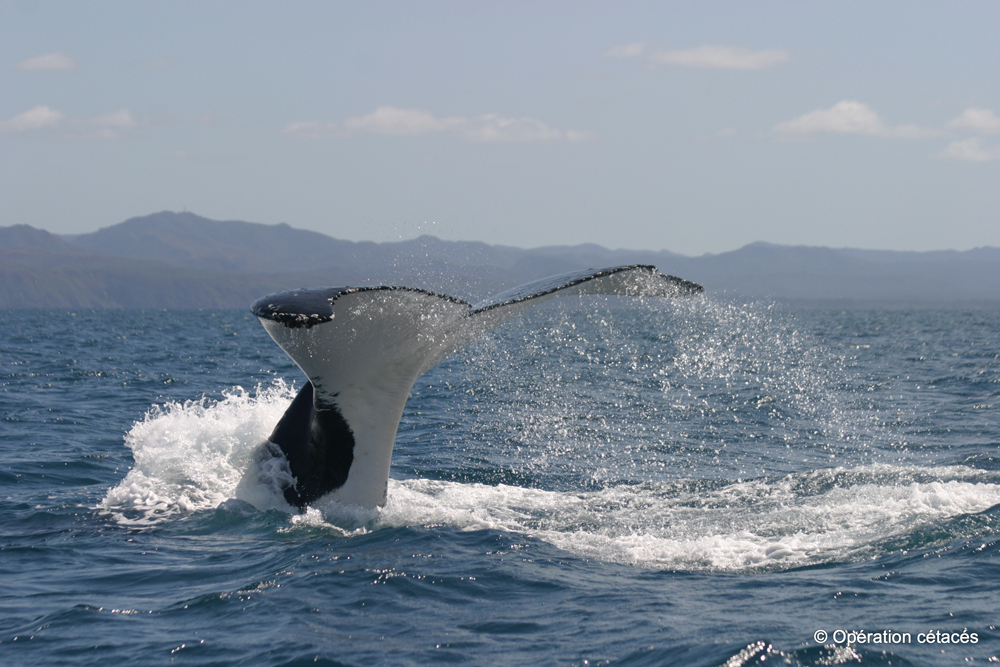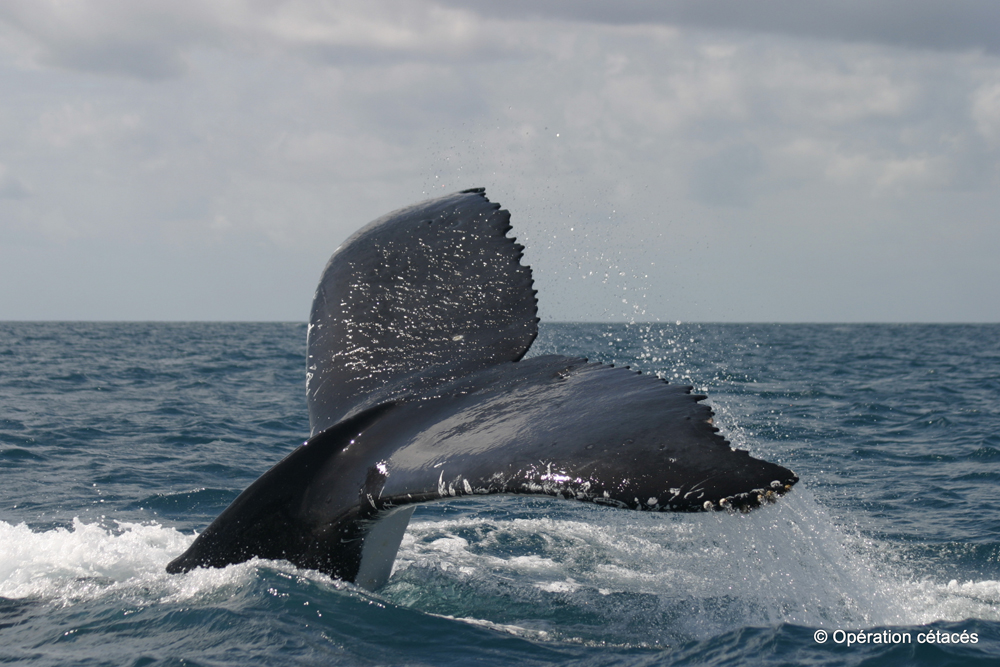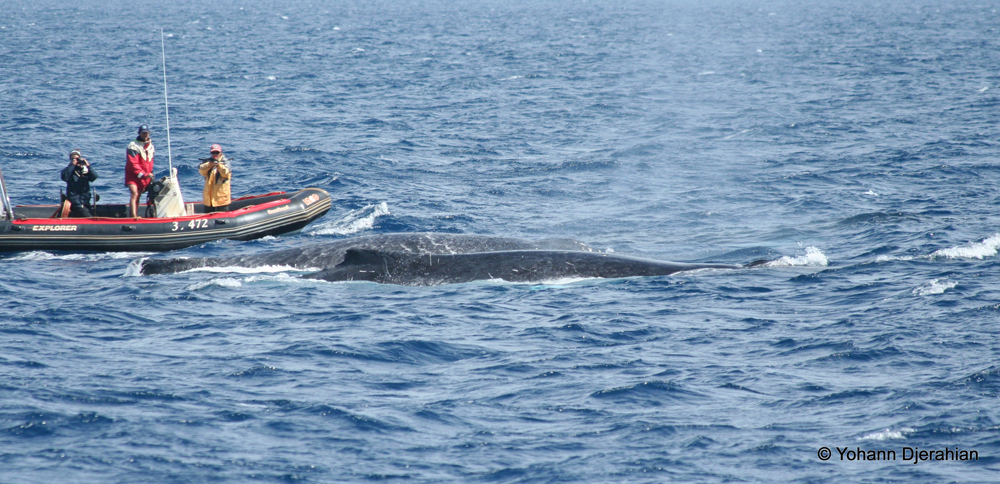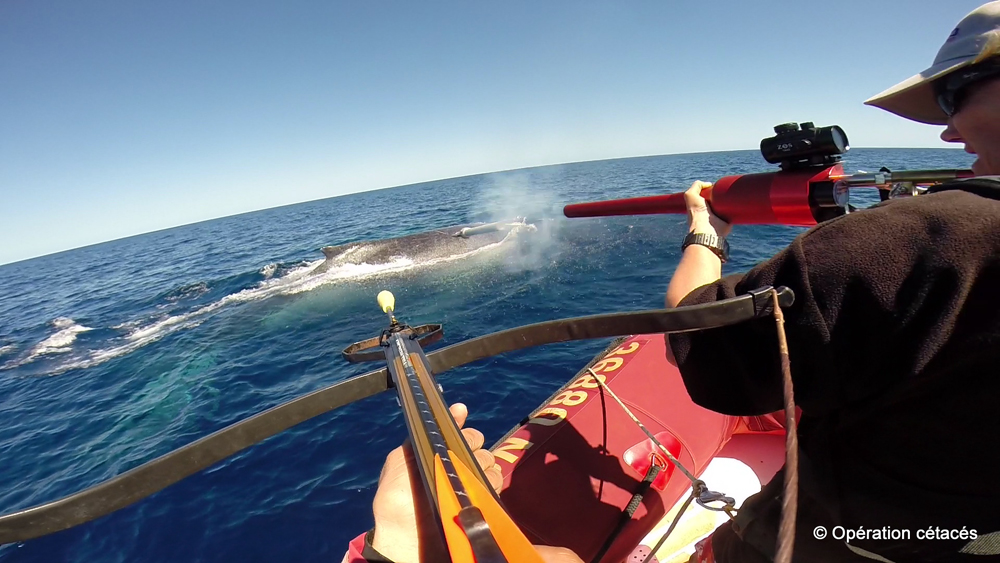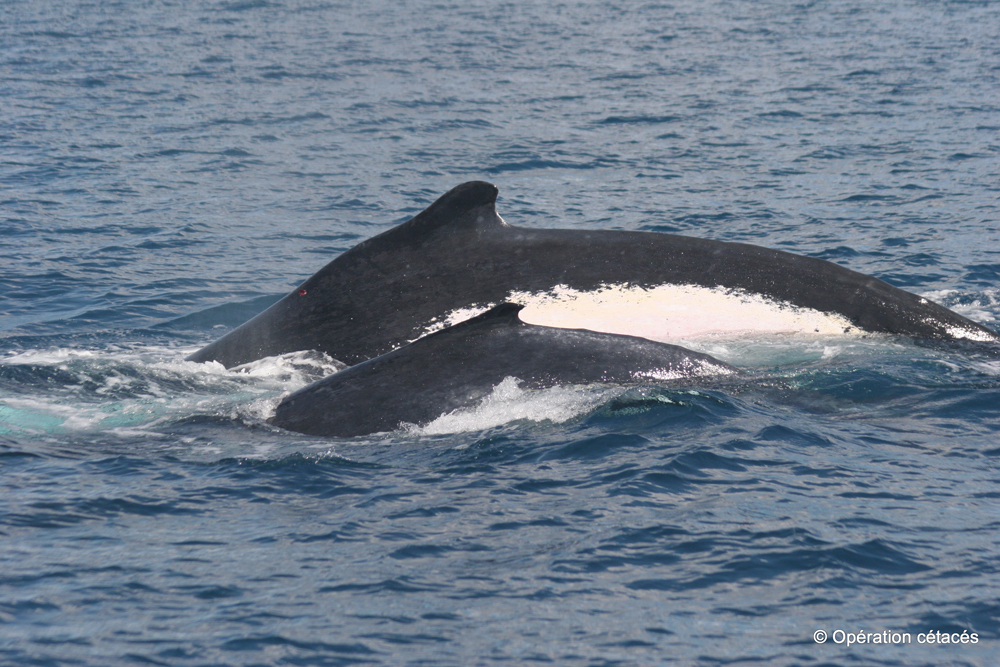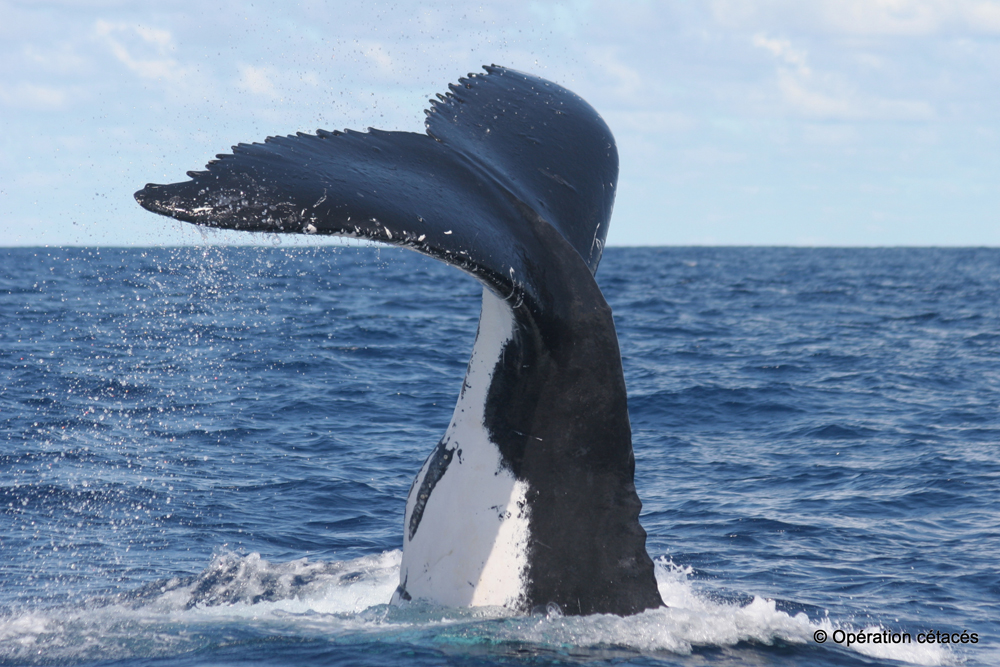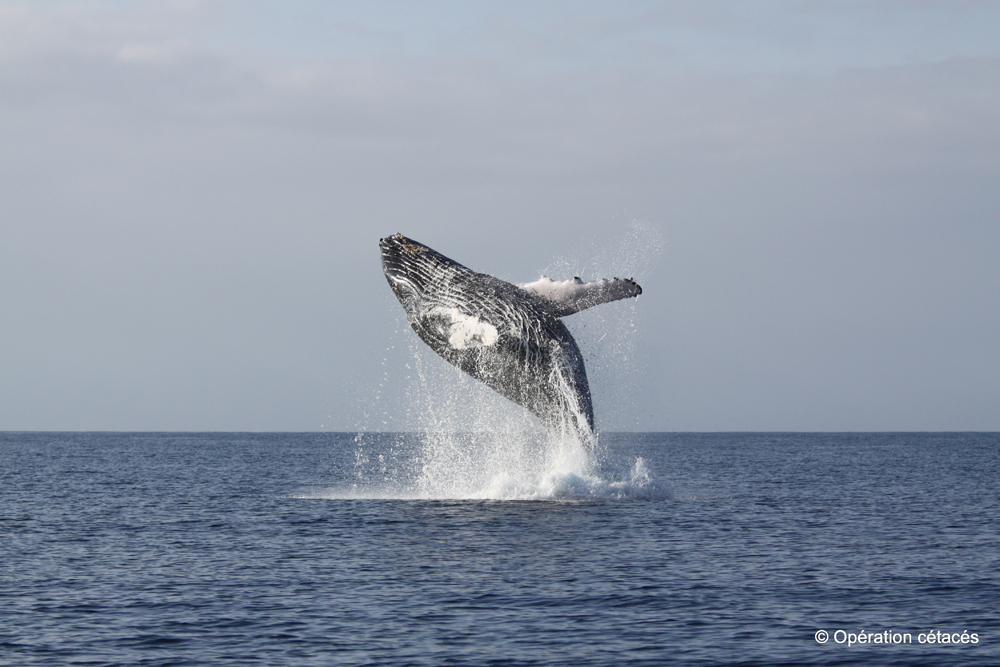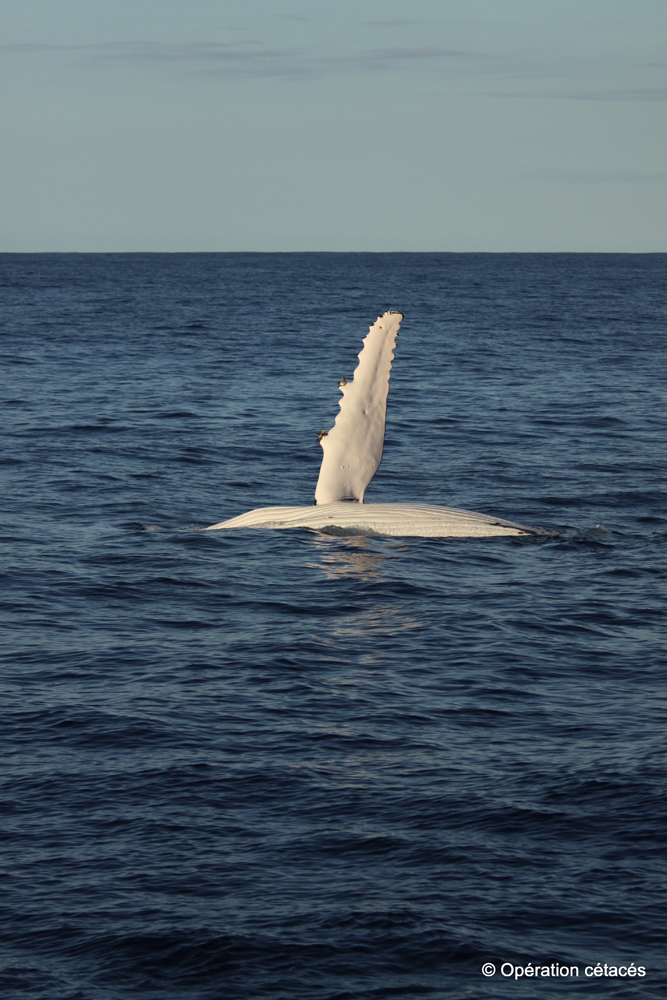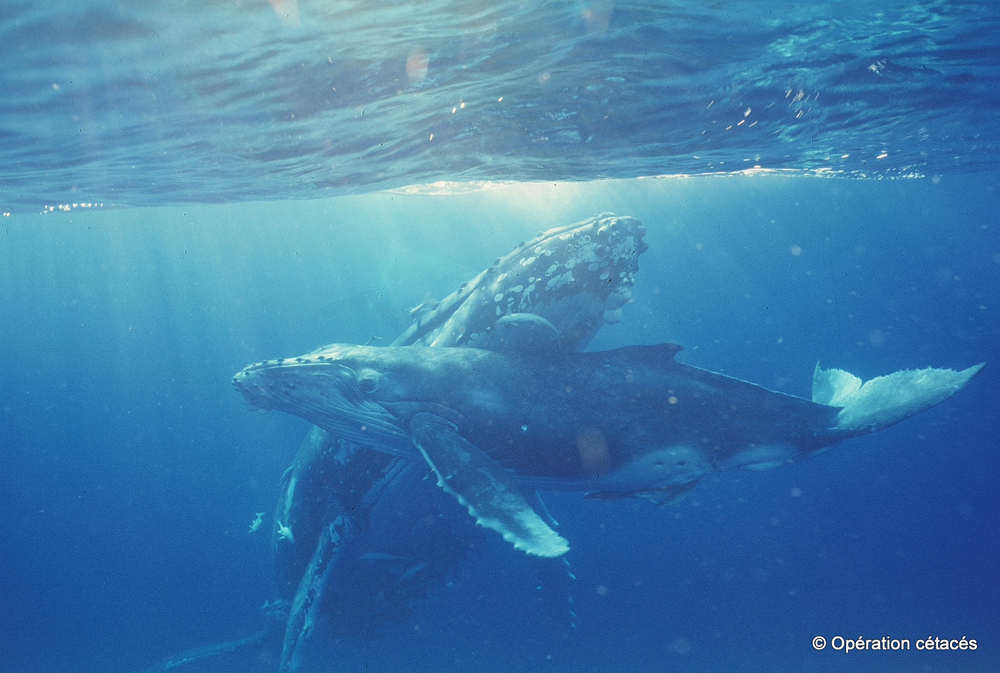In Photos: Tracking Humpback Whales in the South Pacific Ocean
Scientists monitored the travels of the southwestern Pacific humpback whale in an offshore habitat off New Caledonia, in the South Pacific Ocean. They found that underwater mountains called seamounts serve as key stopovers in the whales' migratory routes. Here's a look at images from the tracking study of the humpback whales. [Read the full story on humpback whales and seamounts]
Prepping for departure
A humpback whale shows the underside of its tail, or fluke, before taking a dive. This "fluke up" position lets scientists and others identify the whales because there are unique markings on the flukes. (Photo Credit: Opération cétacés.)
Diving down deep
The scientists also took photos of the humpback whales' fins and flukes, which are unique to each whale and as such can serve as "fingerprints" to identify the giants.
On the move
To track the whales, the researchers approached the behemoths on boats and used 26-foot-long (8 meters) poles to implant tags into the flanks of the marine mammals near their dorsal fins. (Credit: Yohann Djerahian.)
Get the world’s most fascinating discoveries delivered straight to your inbox.
Two birds
The researchers also collected skin samples to identify each tagged whale's sex and to examine its genes. Here, the scientists deploy a satellite tag on an an adult humpback whale and at the same time collected a biopsy with a crosbow. (Photo Credit: Opération cétacés.)
Family time
A mother humpback whale and her calf swim off Caledonia. The white flank of the mother is a characteristic of some Southern Hemisphere humpback whales. (Photo Credit: Opération cétacés.)
Look out below
The satellite data collected from the tags revealed about 75 percent of the humpback whales off New Caledonia stopped over at seamounts, or underwater mountains, that rose at least 330 feet (100 meters) from the seafloor. (Photo Credit: Opération cétacés.)
Slap and splash
For instance, the humpbacks trekked at an average speed of 2.2 mph (3.5 km/h) during most of their migration, but at Antigonia seamount visitors slowed to about 0.8 mph (1.3 km/h) on average. Here a humpback whale slapping its tail in front of Mato islet, New Caledonia. (Photo Credit: Opération cétacés.)
Practice, practice, practice
Humpback whales range in weight from 50,000 to 80,000 pounds (22,000 to 36,000 kg), with lengths of up to 60 feet (18 meters), according to the National Oceanic and Atmospheric Administration (NOAA). Females are larger than males. Here, an immature humpback whale breaching. (Photo Credit: Opération cétacés.)
Strong and beautiful
Early morning breaching on a calm austral winter day. (Photo Credit: Opération cétacés.)
Hailing the crew
Pectoral extension with the evening light, above a seamount. (Photo Credit: Opération cétacés.)
Up and away
Breach of humpback whale. (Photo Credit: Opération cétacés.)
Family love
A mother humpback whale and her calf interact on Antigonia seamount off New Caledonia. (Photo Credit: Opération cétacés.)
